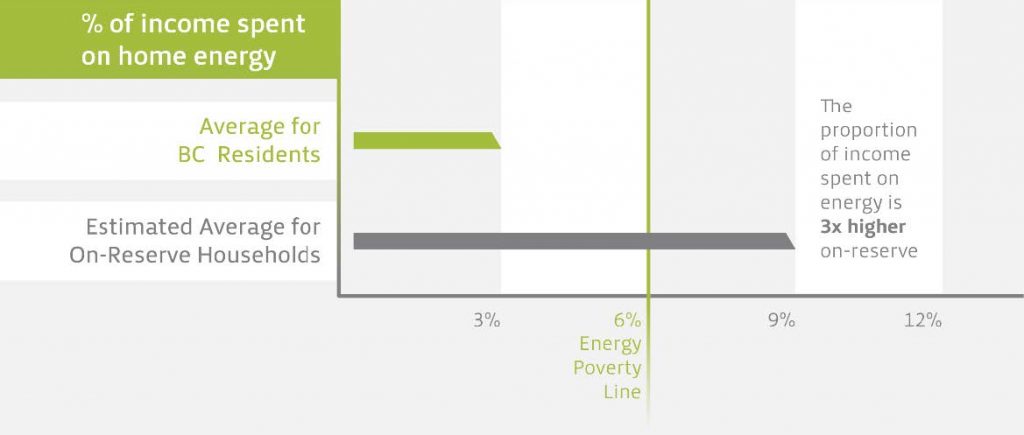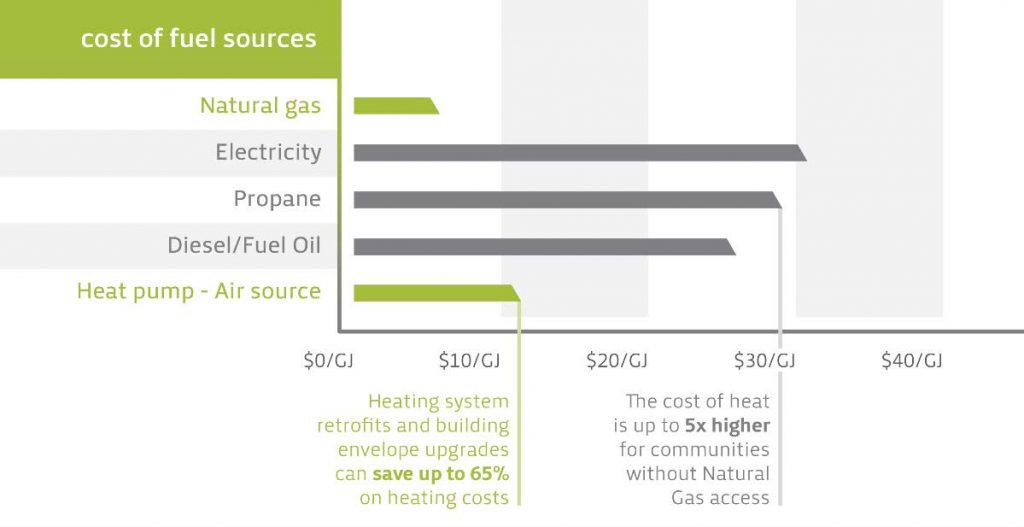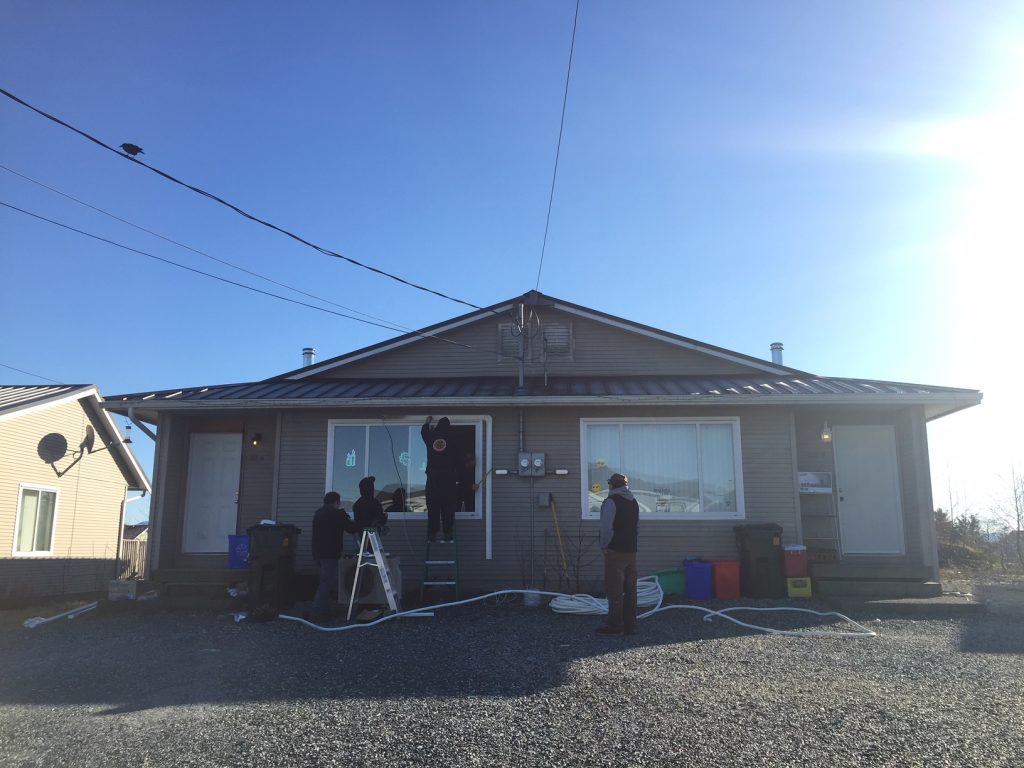[Published September 28, 2018]
Indigenous communities in British Columbia face a number of unique challenges related to housing and energy use that cause or exacerbate other social, economic, and environmental issues on reserves. With limited access to affordable fuel for these remote communities, coupled with poor quality housing, the proportion of household income needed to adequately heat their homes is significantly higher than the average BC resident.
Graham Anderson, our Energy Program Manager, shares more about the issue of energy poverty and his recent work to help find solutions.
Energy poverty has significant impacts
Early on in my work at Ecotrust Canada, I picked up an elderly hitchhiker from one of the remote Indigenous communities I was working with in the Interior of BC. On the ride, he told me the purpose for his trip – he was going into Lillooet to pay his BC Hydro bill, which was over $1,000 for just two months of electricity. He had usually heated his home with wood in the winter, but was sick this year and primarily relied on electric heaters instead. At the time I was shocked to hear about such a high electricity bill for a home with electric heat. Unfortunately, in the years since that encounter, I’ve learned that this experience is all-too-common in BC’s remote Indigenous communities.
Only about 40% of people living on-reserve in BC have access to natural gas to heat their homes – compared to 95% of other BC residents. This lack of access results in Indigenous communities having to transport more expensive fuels such as diesel or oil into their towns, increasing the heating cost for individual households who may already be struggling to make ends meet financially.
With this limited access to affordable fuels, low quality housing and, in some cases, no access to grid electricity, a typical on-reserve household is estimated to spend three times as much of their income* as the median Canadian household on meeting their basic energy needs. These excessively high energy costs exacerbate the social distress and impact of poverty on people, while inadequate heating systems lead to negative health impacts due to lower air quality and mold.

Heating efficiency solutions are available
We’ve seen that energy efficiency retrofits to home heating systems can really help families switch to cleaner fuels and dramatically reduce their energy costs. If done in partnership with Indigenous communities, these retrofits can also create new training and employment opportunities for local residents, as well as addressing their longstanding health, social, and environmental challenges.
Earlier this year, we worked in partnership with the Heiltsuk Tribal Council in Bella Bella, BC, to install heat pumps in twenty community homes. The heat pumps work like an air conditioner in reverse, collecting warmth out of the air and bringing it inside the home, typically using one third of the energy used to create the same heat by a furnace. The results of this pilot were impressive, saving about $300/month on average for the impacted residents. We were also very pleased to see community members trained and employed in installing and maintaining the new systems, creating new opportunities for local people and building local capacity to support the new equipment.

Barriers exist to taking solutions to scale
While clean energy solutions are available, unfortunately they are not happening at scale across Indigenous communities due to barriers to financing, vastly insufficient funding programs, and capacity constraints within communities.
So throughout 2018, we’ve been undertaking a program of research, exploration, and convening in order to gain a deeper understanding of the barriers in place, explore solutions that have been developed in other parts of Canada and the rest of the world, and validate the appropriateness of these solutions to the realities faced by Indigenous communities in BC.
I’m especially looking forward to planning a convening event with community leaders and policymakers in the coming months, to directly engage about the most appropriate solutions to the problem of energy poverty on reserves.
* This figure was estimated by Ecotrust Canada based on available data and project-based knowledge of typical community experiences. There are a wide range of household experiences and this estimate is intended to reflect a reasonable average.
Watch the video about the project here:
Thank you to Vancity Credit Union, Patagonia, and the Province of British Columbia for supporting this important project.

